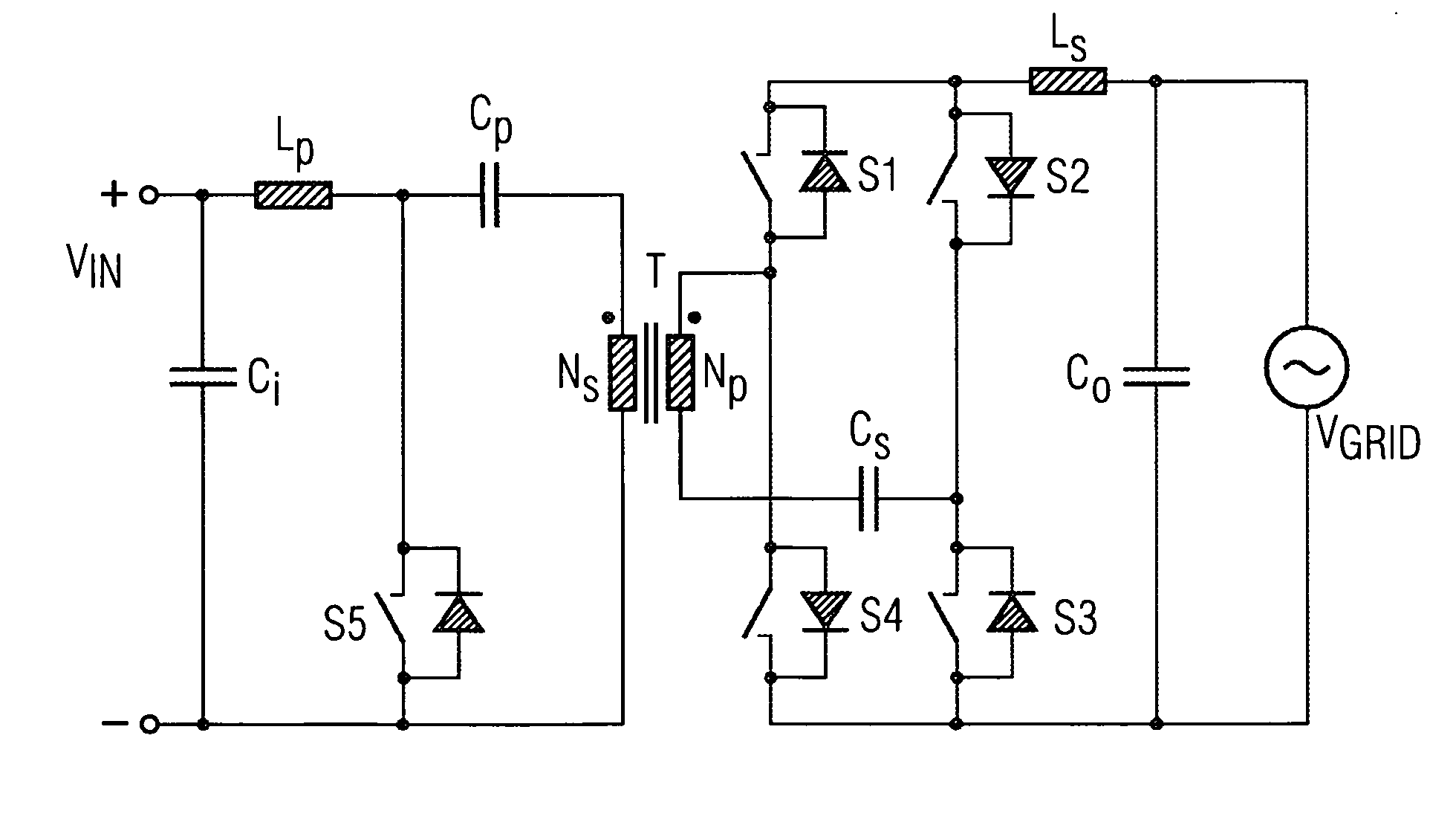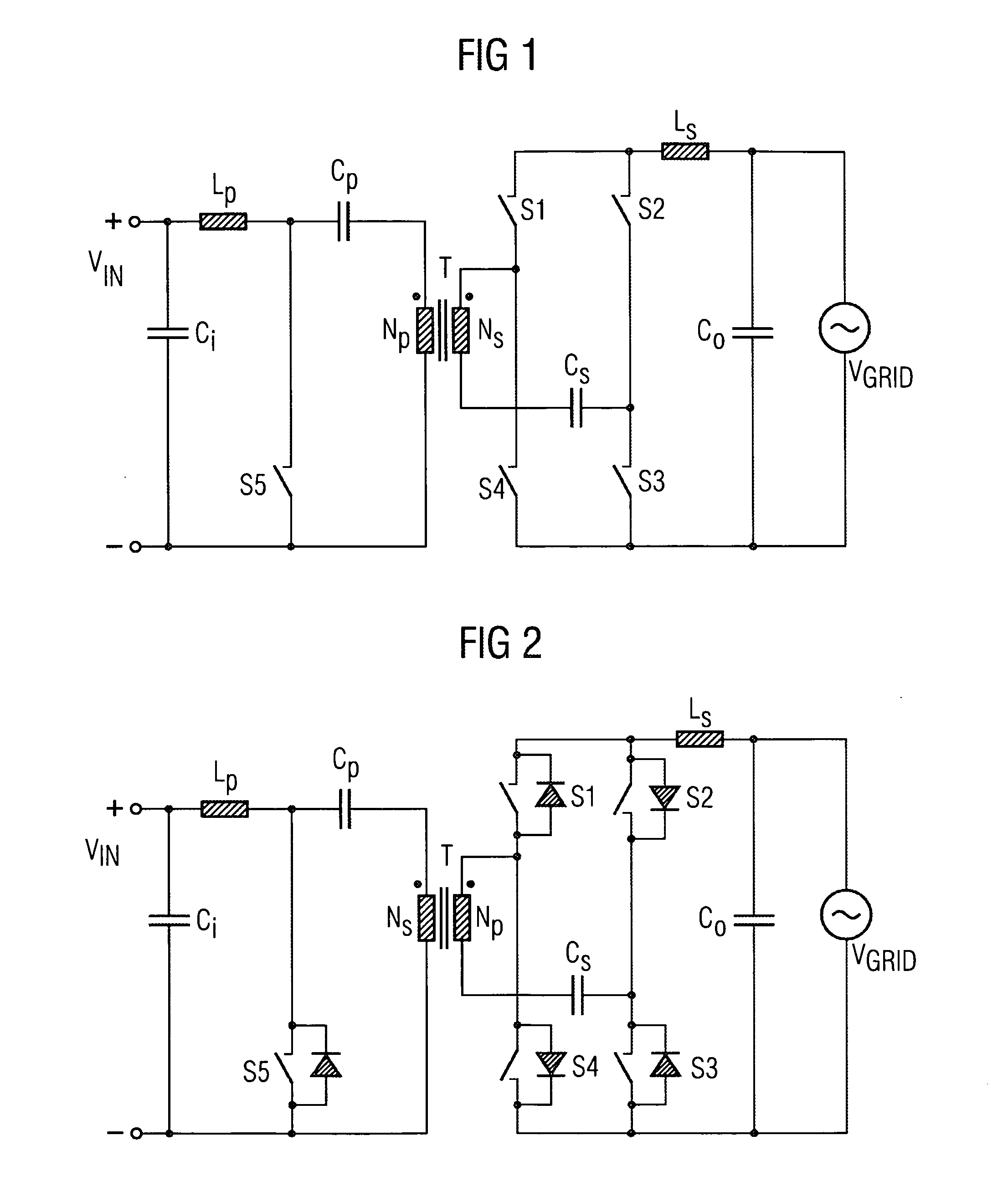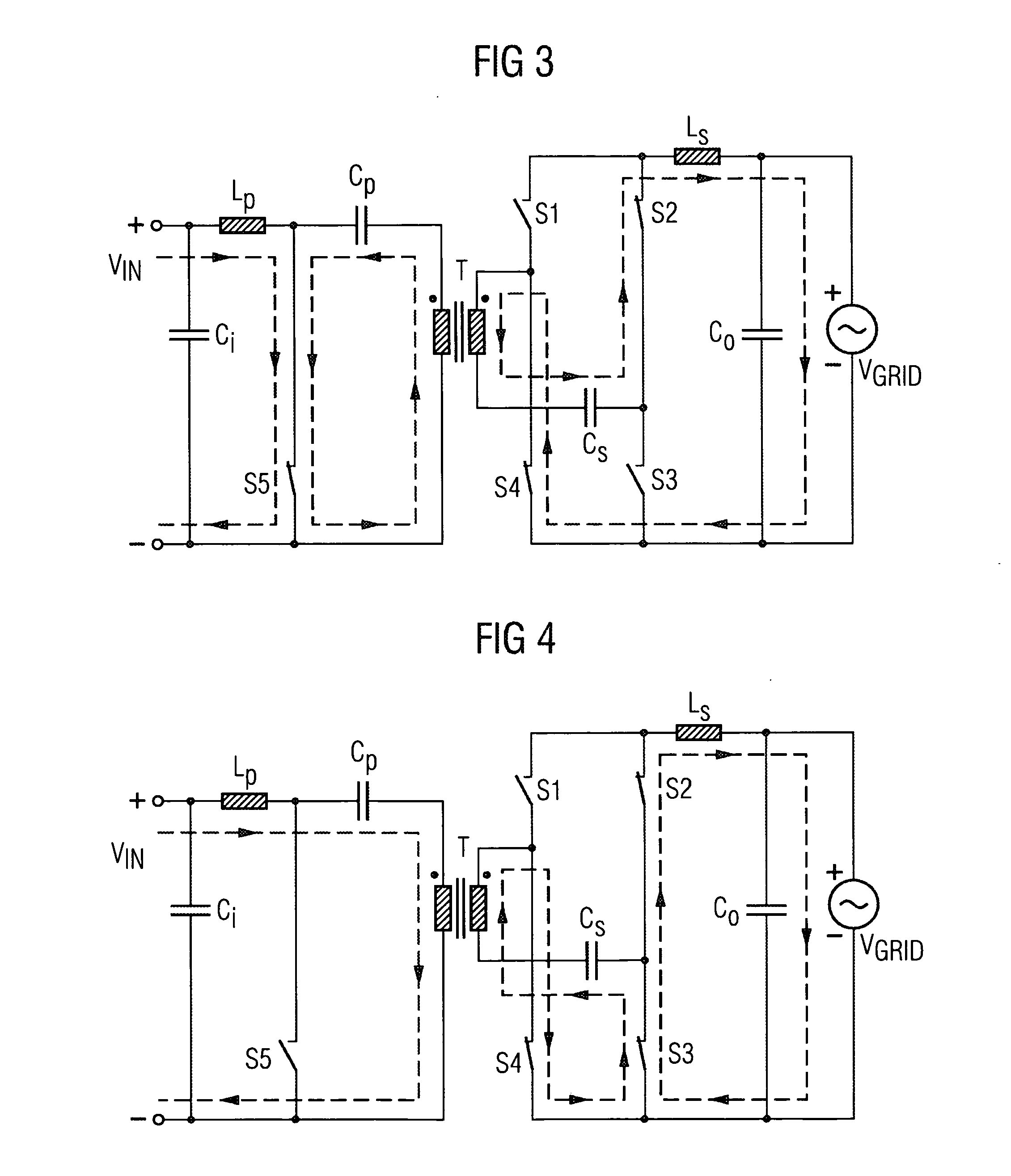Inverter Circuit and Method for Operating the Inverter Circuit
a technology of inverter circuit and inverter, which is applied in the direction of dc-ac conversion without reversal, process and machine control, instruments, etc., can solve the problems of increasing switching losses, component costs, and the number of components required
- Summary
- Abstract
- Description
- Claims
- Application Information
AI Technical Summary
Benefits of technology
Problems solved by technology
Method used
Image
Examples
Embodiment Construction
[0057]FIG. 1 shows a primary stage of a Cuk converter comprising a transformer T and a secondary stage implemented as a full bridge. The secondary stage comprises four switching elements S1, S2, S3 and S4 which are interconnected to form a full bridge. The full bridge connects a secondary winding NS disposed on the transformer T in series with a first capacitor CS via a second choke LS and an output capacitor Co to an AC voltage VGRID.
[0058]The primary stage comprises a primary winding NP disposed on the transformer T, said winding being connected in series with a second capacitor CP and a first choke LP via an input capacitor Ci to a DC voltage VIN. Connected in parallel with the primary winding NP and second capacitor CP is a fifth switching element S5.
[0059]The primary and secondary winding NP, NS are disposed on the transformer T with the same winding direction. A three-limb transformer core, for example, can also be used, wherein the primary and secondary windings NP, NS are di...
PUM
 Login to View More
Login to View More Abstract
Description
Claims
Application Information
 Login to View More
Login to View More - R&D
- Intellectual Property
- Life Sciences
- Materials
- Tech Scout
- Unparalleled Data Quality
- Higher Quality Content
- 60% Fewer Hallucinations
Browse by: Latest US Patents, China's latest patents, Technical Efficacy Thesaurus, Application Domain, Technology Topic, Popular Technical Reports.
© 2025 PatSnap. All rights reserved.Legal|Privacy policy|Modern Slavery Act Transparency Statement|Sitemap|About US| Contact US: help@patsnap.com



